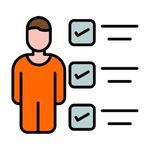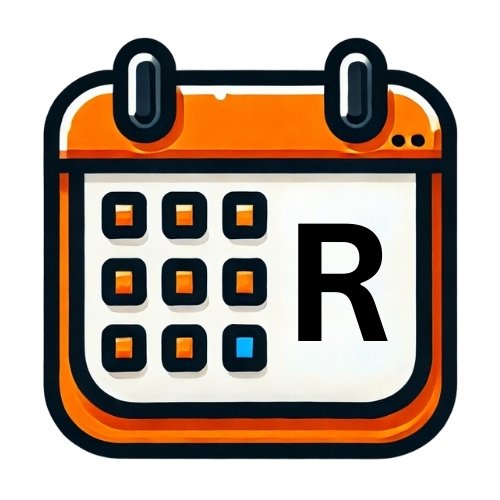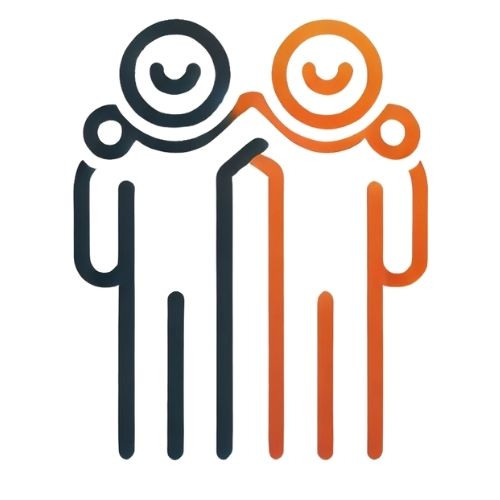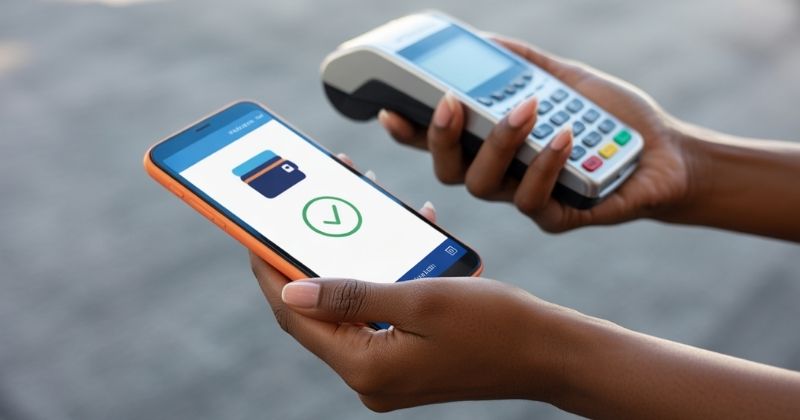
Mobile networks are reshaping how South Africans access credit by extending their reach beyond communication into financial services. Using customer data, mobile wallets, and app-based platforms, companies like Vodacom and MTN now provide quick, accessible personal loans to millions who were previously underserved by traditional banks. This development reflects South Africa’s growing shift towards mobile-first finance, driven by convenience, affordability, and the need for broader financial inclusion.
Key Takeaways
- Telcos Are Redefining Access To Credit: Mobile networks such as Vodacom and MTN are now offering personal loans and small advances, giving millions of South Africans, particularly those without formal bank accounts, faster and more inclusive access to credit.
- Partnerships Drive Regulated Growth: Telcos work with licensed credit providers like Old Mutual and fintech firms such as JUMO to comply with the National Credit Act. These partnerships combine telecom data with financial expertise to assess affordability and manage lending risk effectively.
- New Competition And Consumer Risks: This growing trend is increasing competition for traditional banks and improving financial inclusion, but it also presents challenges related to over-indebtedness and data privacy, highlighting the need for strong regulation and responsible borrowing.
South Africa Moves Towards Mobile-First Finance
South Africa’s financial system presents a complex contrast. While the country has a mature banking industry and a technologically advanced urban market, a large portion of its citizens remain underbanked or entirely outside the reach of traditional financial institutions. This imbalance has paved the way for mobile financial services to play a vital role in expanding access to money management and credit facilities. These services have proven effective in closing the gap by providing quick, reliable, and inclusive financial options without the restrictive procedures often associated with conventional banking.
Across the globe, the transition towards mobile-based payments has accelerated dramatically. In South Africa, however, the transformation has been shaped by necessity as much as innovation. Challenges such as power interruptions, the rising cost of living, and a growing generation of digitally aware consumers have fuelled the demand for financial tools that function reliably regardless of external conditions. Whether it involves paying for everyday essentials through a mobile wallet, receiving international transfers, or applying for small personal loans through an app, mobile finance in South Africa has evolved beyond convenience and is now viewed as a critical financial lifeline for millions.
About Arcadia Finance
Find your ideal loan with ease through Arcadia Finance. Choose from 19 reputable NCR-approved lenders, pay no application fees, and experience a fast, transparent borrowing process you can trust.
How Mobile Network Lending Works In South Africa
Mobile networks in South Africa are now extending beyond their traditional role of connectivity providers to become active participants in financial services. By using their extensive infrastructure, customer relationships, and data, these companies have created an alternative path for many South Africans to access short-term and personal loans. The process is largely digital, simple, and designed to reach customers who may not have access to conventional credit.

Eligibility and Data Assessment
Before a loan is approved, the mobile network evaluates whether a customer qualifies by analysing non-traditional data. This includes airtime purchase history, recharge patterns, frequency of use, and consistency of payments on the network. Some networks require a minimum period of active use before a customer becomes eligible. For example, Vodacom often expects at least six months of network activity before granting access to its lending services. For larger loan amounts, identity verification and supporting documents such as a South African ID, bank statements, or proof of income are typically required. This ensures compliance with national credit laws while also helping the provider assess risk more accurately.

Loan Application and Approval
Once eligibility has been established, customers can apply for loans directly through their mobile phones. Applications are generally completed via the network’s app, USSD menu, or mobile wallet interface. In the case of MTN MoMo, users can select the loan menu and apply through Qwikloan. After submission, the application goes through a credit decision algorithm that considers usage data, affordability, and past repayment behaviour. Smaller loans, such as “cash advances,” are often approved within seconds, while larger personal loans may take a few minutes or hours depending on verification requirements.

Disbursement Of Funds
When a loan is approved, the funds are usually transferred directly into the customer’s mobile wallet or linked bank account. For smaller short-term loans, such as Vodacom’s Cash Advance, the money is credited to the user’s Vodacom wallet. This allows customers to use the funds immediately for everyday needs such as paying bills, topping up airtime, or making purchases. The digital nature of this process makes access to funds quicker and far more convenient than traditional lending.

Repayment and Collections
Repayment is designed to be automatic, reducing the need for customers to visit branches or make manual payments. The mobile operator or its lending partner sets up a debit order or enables automatic deductions from the user’s mobile wallet or bank account when funds become available. Short-term advances usually have repayment periods of 7, 14, 21, or 28 days, depending on the product. Interest rates, service fees, and late-payment penalties are applied according to the National Credit Act, ensuring transparency and fairness in all costs. Repayment performance is closely monitored, and any missed payments or defaults are often reported to the credit bureaus, affecting the customer’s future access to credit.

Risk Control and Limits
To manage financial risk, networks impose strict limits on the loan amounts available to each customer. New borrowers typically start with smaller limits, such as R50 to R500 for Vodacom’s Cash Advance, and can gradually qualify for higher amounts after showing consistent repayment behaviour. These lending systems are dynamic, adjusting loan limits based on repayment history and network usage. Customers who default or delay payments may find their borrowing capacity reduced or temporarily suspended. In more serious cases, defaults can lead to the suspension of services or referral to legal collection processes.

Partnerships and Structure
While the mobile networks facilitate the loan process, they rarely operate as lenders in isolation. Instead, they work with licensed credit providers that supply the capital and manage regulatory compliance. For instance, Vodacom’s personal loans are issued through Old Mutual Finance, combining telecom infrastructure with financial expertise. In this arrangement, the network focuses on customer engagement, data collection, and disbursement, while the financial partner handles underwriting, risk assessment, and repayment management. This partnership model has proven effective in extending credit access to millions of South Africans, particularly those who lack a formal credit record.

The Impact Of Digital Wallets On Financial Inclusion
The rapid growth of mobile wallet adoption in South Africa has been remarkable, largely driven by the country’s unique financial and social circumstances. For decades, many South Africans, especially in rural or low-income areas, have struggled to access formal banking institutions. Factors such as geographical distance, high service costs, and limited infrastructure have made traditional banking impractical for large parts of the population, leaving many reliant on cash-based transactions for everyday needs.
The shift from informal cash handling to structured financial management has brought significant change for those who were previously excluded from the financial system. Through digital wallets, individuals now have access to secure, accessible, and traceable financial tools, allowing them to participate more fully in the economy. This evolution not only provides a bridge to modern financial services but also helps build a recognised financial identity, enabling users to receive salaries, social grants, and other payments directly into their accounts with greater convenience and safety.
Telcos Offering Personal Loans in South Africa

Vodacom / VodaLend
Vodacom’s VodaLend platform allows users to compare and apply for personal loans from multiple credit providers in one place. Through VodaLend Compare, customers can review offers from South Africa’s top lenders and choose the most suitable option.
One of its most popular products is the Cash Advance, which lets Vodacom users borrow between R50 and R500. Approved funds are paid directly into the VodaPay Wallet, and borrowers must have at least six months of active network usage. Repayment periods can extend up to 61 days, making it suitable for short-term needs.
Vodacom also provides larger personal loans and business funding of up to R5 million for qualifying enterprises. The company promotes VodaLend as a tool to support financial inclusion, giving more South Africans access to secure, regulated credit.
Loan eligibility is determined by analysing network behaviour, including recharge patterns and payment history, together with standard affordability checks to set borrowing limits.

MTN / MoMo and Qwikloan
MTN’s MoMo (Mobile Money) platform has become a central part of its financial services strategy in South Africa, offering payments, transfers, and now short-term lending.
Within this ecosystem, Qwikloan allows users to apply for loans ranging from R250 to R10,000 directly through the MoMo app. The process is fast, requires minimal paperwork, and is open to users from any network.
MTN works with JUMO, a fintech partner that provides the technology for credit assessment, underwriting, and loan management. To qualify, users need a valid South African ID and consistent activity on the MoMo app. Interest rates are reported to start at around 10% for selected borrowers.
Beyond Qwikloan, MTN plans to expand its MoMo platform by integrating lending more closely into daily financial activities, allowing users to access small advances during transactions such as bill payments or money transfers.
Comparison and Implications
When comparing Vodacom’s VodaLend offerings and MTN’s MoMo / Qwikloan, a few key differences and consequences emerge for South African consumers:
| Feature | Vodacom / VodaLend | MTN / MoMo and Qwikloan |
|---|---|---|
| Loan Range / Flexibility | Small cash advances (R50–R500) plus larger personal/business loans via lending partners | Short-term consumer loans (R250–R10,000) |
| Platform Model | Marketplace (“Compare”) + direct lending via partner providers | Direct in-app lending (via MoMo with JUMO) |
| Eligibility Data Sources | Network usage, recharge behaviour, Vodacom account history | MoMo transaction history, app usage, identity checks |
| Network Dependence | Requires at least six months of Vodacom usage for Cash Advance | Works even if customer is on another network, as long as they use MoMo |
| Interest / Cost Structure | Positioned as more affordable than informal lenders, regulated under National Credit Act | Marketed as low cost compared to banks, some rates around 10% reported |
| Risk to Consumers | Potential for overextension if combined with other credit lines | Similar risk, especially if users view these as easy credit taps |

What This Shift Means For The South African Credit Market
The entry of telecom operators into personal lending is reshaping South Africa’s credit environment. By using customer data and extensive networks, mobile operators are expanding access to credit while increasing competition for banks and micro-lenders.
| Section | Description |
|---|---|
| Increased Competition and Market Diversification | Non-bank providers such as telcos are challenging traditional banks’ dominance in lending. Their ability to use customer data and mobile infrastructure lowers costs and speeds up loan approvals. This competition is expected to drive innovation and push traditional lenders to simplify their processes and offer more flexible products. |
| Broader Financial Inclusion with Caveats | Telco lending enables individuals with limited credit history to access loans using behavioural data (e.g., airtime use, mobile payments). While this promotes inclusion, it risks worsening over-indebtedness among vulnerable households without strong regulatory oversight. |
| Evolution of Credit Scoring and Underwriting | Alternative data models are transforming how creditworthiness is evaluated. Instead of relying solely on credit bureaus, lenders now analyse mobile transactions and spending behaviour. This improves inclusion and credit data accuracy but demands robust data protection and reporting standards. |
| Risk Pressures on Credit Quality | Expanding access to credit brings risk if loans are issued too freely. Rising delinquencies in South Africa highlight the need for careful monitoring. The NCR’s oversight remains crucial to maintain responsible and transparent lending practices. |
| Changing Consumer Behaviour | Easier access to microloans may lead consumers to borrow more often for short-term needs. While helpful in emergencies, this can foster dependency. Responsible borrowing and timely repayment can, however, help consumers build stronger credit profiles. |
| Structural Impact on the Credit Ecosystem | The merging of telecoms, fintechs, and banks is creating a more integrated lending ecosystem. Telcos handle access, fintechs provide analytics, and banks supply capital. Success depends on transparency, consistent regulation, and adherence to responsible lending principles. |
Conclusion
The rise of mobile network lending in South Africa marks a major step toward financial inclusion and accessibility. By using data, mobile wallets, and digital platforms, companies such as Vodacom and MTN are enabling faster access to credit for individuals who were once excluded from traditional banking. These services combine convenience and innovation with the security of regulated lending. However, as this market continues to grow, both consumers and regulators must ensure that borrowing remains responsible, transparent, and sustainable to prevent rising debt and protect financial stability.
Frequently Asked Questions
Mobile network lending refers to loans offered by telecom providers such as Vodacom and MTN through digital platforms like VodaLend and MoMo. Customers can apply for and receive funds using their mobile phones, with repayments automatically deducted from linked wallets or bank accounts.
Eligibility depends on the provider, but applicants usually need to be active customers with regular mobile usage, a valid South African ID, and proof of affordability. Some services, like Vodacom’s Cash Advance, require at least six months of network activity before approval.
Loan amounts vary between platforms. Vodacom’s Cash Advance offers between R50 and R500, while MTN’s Qwikloan provides short-term loans ranging from R250 to R10,000, depending on the user’s credit profile and repayment history.
Yes. All mobile network loans must comply with the National Credit Act (NCA). This ensures lenders perform affordability checks, disclose all fees and interest rates, and report defaults to credit bureaus to maintain transparency and consumer protection.
The main benefits include quick access to credit, minimal paperwork, and broader inclusion for individuals without traditional bank accounts. The main risks involve high interest rates, potential over-borrowing, and privacy concerns related to the use of personal data. Borrowers should always compare offers and ensure they can meet repayments before applying.





